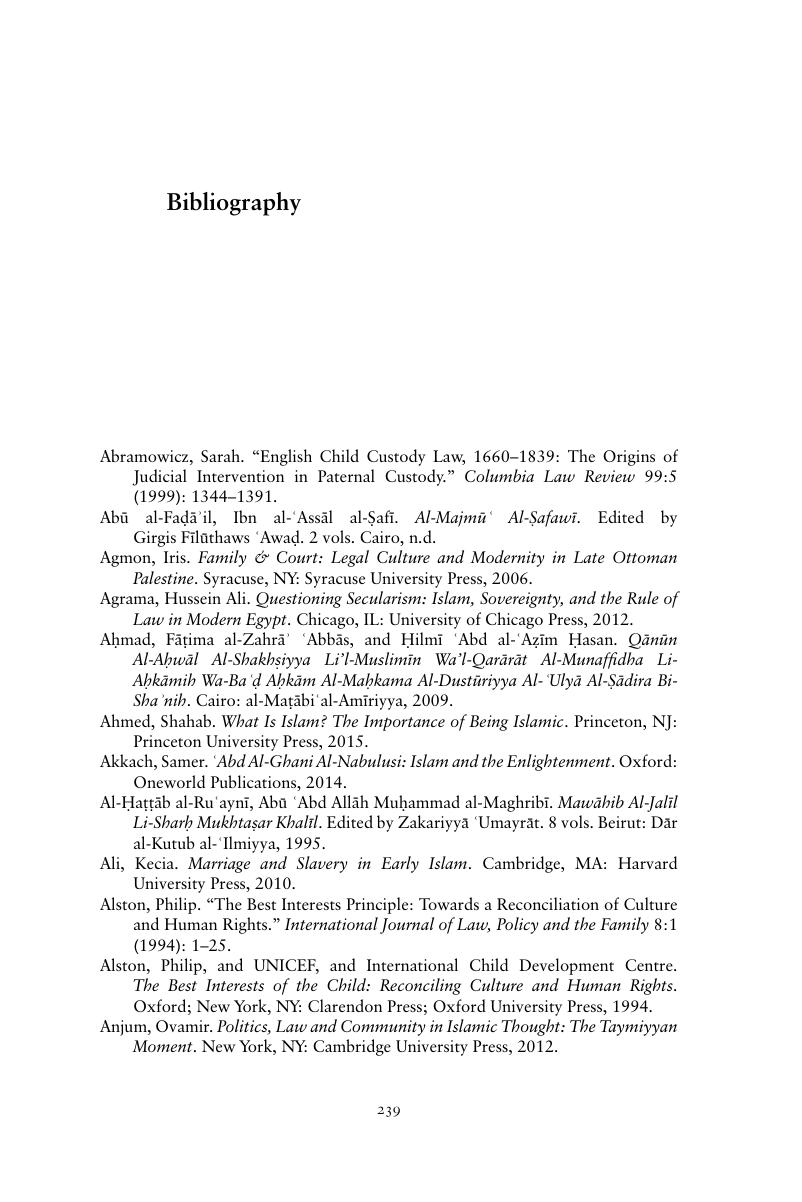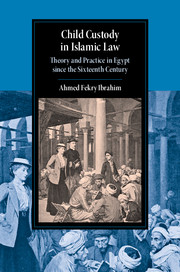Book contents
- Child Custody in Islamic Law
- Cambridge Studies in Islamic Civilization
- Child Custody in Islamic Law
- Copyright page
- Dedication
- Contents
- Acknowledgments
- Introduction
- Part I Child Custody and Guardianship in Comparative Perspective
- Part II Ottoman-Egyptian Practice, 1517–1801
- Part III The Transition into Modernity
- Conclusion
- Bibliography
- Index
- Other titles in the series
- References
Bibliography
Published online by Cambridge University Press: 30 July 2018
- Child Custody in Islamic Law
- Cambridge Studies in Islamic Civilization
- Child Custody in Islamic Law
- Copyright page
- Dedication
- Contents
- Acknowledgments
- Introduction
- Part I Child Custody and Guardianship in Comparative Perspective
- Part II Ottoman-Egyptian Practice, 1517–1801
- Part III The Transition into Modernity
- Conclusion
- Bibliography
- Index
- Other titles in the series
- References
Summary

- Type
- Chapter
- Information
- Child Custody in Islamic LawTheory and Practice in Egypt since the Sixteenth Century, pp. 239 - 256Publisher: Cambridge University PressPrint publication year: 2018



